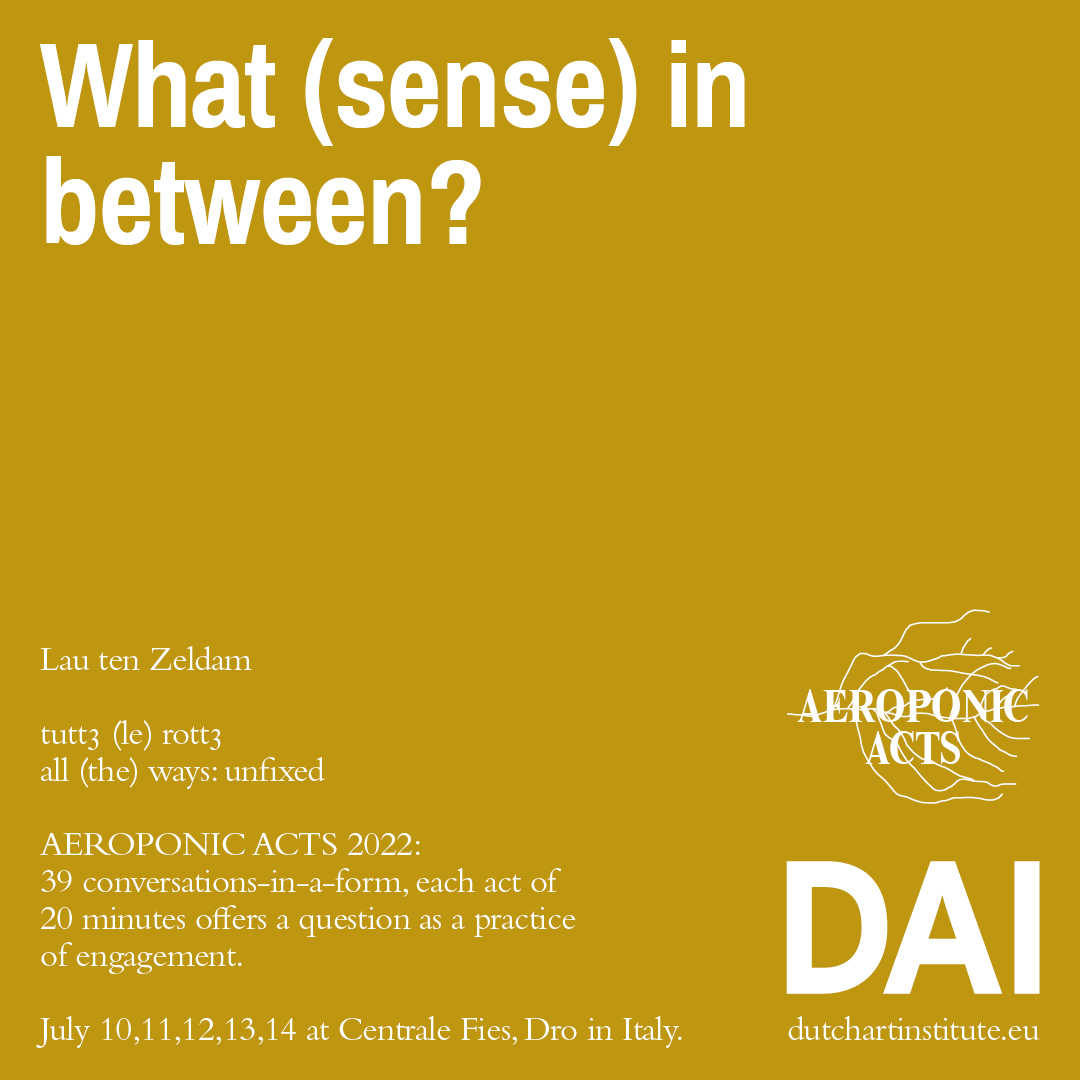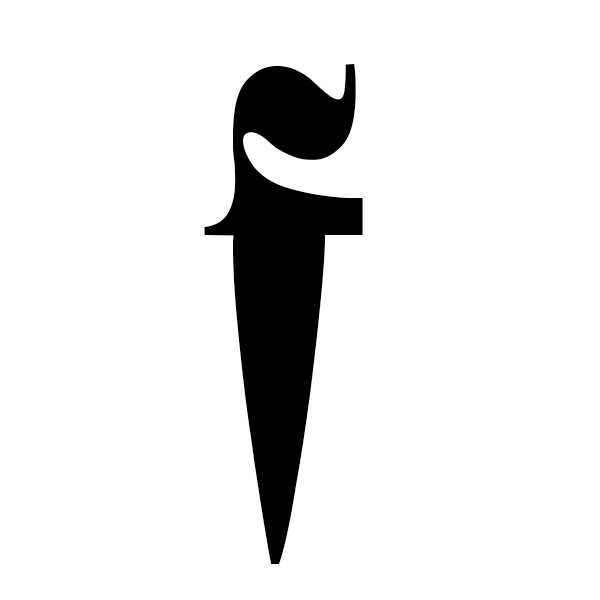Lau ten Zeldam: skin and bronze
‘Aeroponic’ – root systems nourished by air – Acts is the name given to the nomadic Dutch Art Institute’s final Kitchen presentations. Each participant addresses one question, as a practice of engagement.
Here you will find the documentation of Lau ten Zeldam's presentation as filmed by Baha Görkem Yalım. The written report is by Hubert Gromny and it includes a summary of the comments by esteemed guest respondents.
skin and bronze
Lau's question: What (sense) in between?
Lau's introduction: A poem — written in and out of conversation with my grandmother’s feminist image. At the point of touch.
//
The presentation contains reference to the monument “gedachtebank,” artist Arjanne van der Spek, donated in 2003 by the Bernardijn ten Zeldam Stichting in commemoration of Bernardijn ten Zeldam-Hartelust. Beelden van Wageningen: Kunst in de Openbare Ruimte,https://www.beeldenvanwageningen.nl/artworks/detail/6347697.
Thank you:
Ilgīn Deniz Akseloğlu (voice), Morena Buser, Eli Witteman, Ros del Olmo, Mara Ittel, Nadja Henß and Vera Mühlebach (stage setup), Franziska Windisch (help with sound edit), Oulimata Gueye and You Mi (respondents previous kitchen), Arjan van den Brink, Otto ten Zeldam, Bernardijn.
Hubert's report: The audience enters the dark space and seat in front of the screen and the stage. On the stage there is an installation consisting of few highlighted sculpture-like objects. The white powder resembling sugar takes a coiling shape interrupted with cut-outs of hands, it is illuminated by ultraviolet light. The soft, yellow spotlight shines at the big cardboard box
The projection starts and is accompanied by the soundscape resembling a wind hissing and chimes jingling. The screening is showing fragmented photographs placed on the surface of crystal, sugar-like powder. The images are abstract and still. A spoken narrative is telling the story of the grandmother of Lau ten Zeldam---Bernardjin ten Zeldam-Hartelust, born in Indonesia to Dutch parents. The story reveals fragments a life of a feminist and state official whom Bernardjin ten Zeldam-Hartelust became---the first female secretary of Dutch ministry of culture. The scenes displaying hands in the ultraviolet light interrupt the abstract images of the video and repeat a few times. Towards the end of the presentation the song with refrain “it doesn’t go away” substitutes the spoken narrative. The lights change directing attention toward white sugar-like powder on the floor, which marks the end of the presentation.
Chiara Figone commented on the narrative strategy based on a collection of pieces and fragments assembled into a story. As such the performance was operating between an incomplete and a synthetized general image of the story. What was apparent for Chiara in the presentation was that the language of the presentation was used to highlight the questions related to remembering and fracturing the memory. Chiara pointed out a contradiction within the language of the work such as describing a feminist as a pioneer and introducing a colonial terminology to make sense out of the family life and a feminist life. As such the work contained unresolved tension on the level of the language. Certain words were evocative of a personal story and invited the viewer/listener to look at it, while at the same time the story opens a larger discussion, beyond the celebration of an individual life. Working with this personal story as an opening to touch broader topics would create more points of access for viewers as well as it could be a commentary on how history is shaping how the present is experienced.
Momtaza Mehri described the presentation as operating in the mode of a litany to the monument of the grandmother and to the grandmother herself. Momtaza observed the dissonance between the space of the stage and the projection. The space oriented visually by the blue lights, handprints and the cardboard monument came across as traces of something left behind and inherited at the same time. Momtaza invoked the forms of “present absence” explored by the poet Mahmoud Darwish to reflect on the line sung towards the end of the presentation “it doesn’t go away”. The phrase has an expansive character as by itself it lacks any specificity and allows thinking of a broader concept of inheritance, which moves in various directions. The unraveling conversation with the grandmother and reflecting on her monumentalisation and canonization of a certain type of feminism is one way of reflecting on what is inherited. Bringing more voices to the story, voices which do not necessarily agree, would allow grasping a specificity of a certain generation and challenge canonization of one experience of feminist life.
Ana Teixeira Pinto reflected on the entanglement of geography and litany present in the work and read a passage from Avery Gordon’s “Ghostly Matters” chapter “Her Shape and His Hands” in order to bring forth the notion of “furniture without memories” as a one form taken by white supremacy. Referring to the figures of hands, shapes and furniture present in the presentation Ana pointed out the role of white women in the expansion of colonial empires and ambivalent relation of feminism to power.
About: Lau ten Zeldam
Lau ten Zeldam's "skin and bronze" was presented before live audience at the Centrale Fies, Dro, Italy on July 11th.
Find the overview of all 24 AEROPONIC ACTS 2022 here: tuttə (le) rottə - all (the) ways: unfixed


